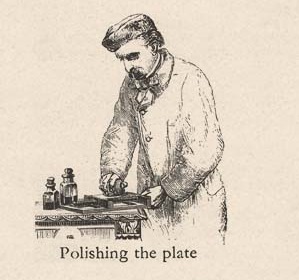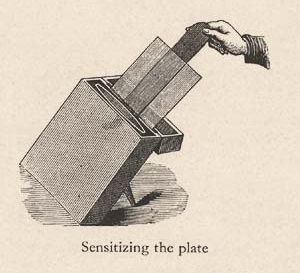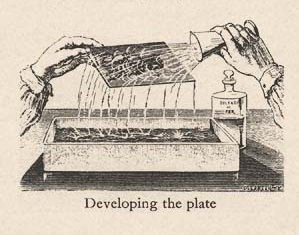
The Wet-Plate Collodion Process
Wet-plate collodion photography, first used in the 1850s, is one of the earliest photographic processes. It produces a photographic image on glass or metal plate.
Depending on the support used, the wet-plate process can produce an ambrotype (one-of-a-kind collodion image on glass), a tintype (collodion image on metal plate) or a collodion negative.

The plate is then made light-sensitive by placing it, while still tacky, into a solution of silver nitrate.
After several minutes the plate is removed and placed into a plate holder, then placed in the camera.

The developed and rinsed plate is then fixed in hypo to remove unexposed silver salts, and washed again thoroughly under running water. The plate is dried over a gentle flame and usually varnished while still warm for protection.

To create an ambrotype (a collodion positive) the wet-plate image is produced on a glass plate which is either of a dark color, or is darkened behind the image. The unexposed, clear areas in the collodion image then show (correctly) as black in the ambrotype thanks to the dark glass or black backing behind them.
To create a tintype, the wet-plate image is produced on a pre-blackened or japanned metal plate, with the same visual effect as an ambrotype.
All steps of the wet-collodion process must be carried out on the spot and within ten minutes, with the plate kept continuously moist, or failure will result. The production of a wet-plate image is very much a "handicraft" and each wet-plate image will inevitably include process artifacts created by variations in the coating of the plate, the lengthy exposure time, and other factors.
(With thanks to Beaumont Newhall, The History of Photography, and Kevin Klein.)
To learn more about Kevin Klein's photography
using the wet-collodion process, click here.